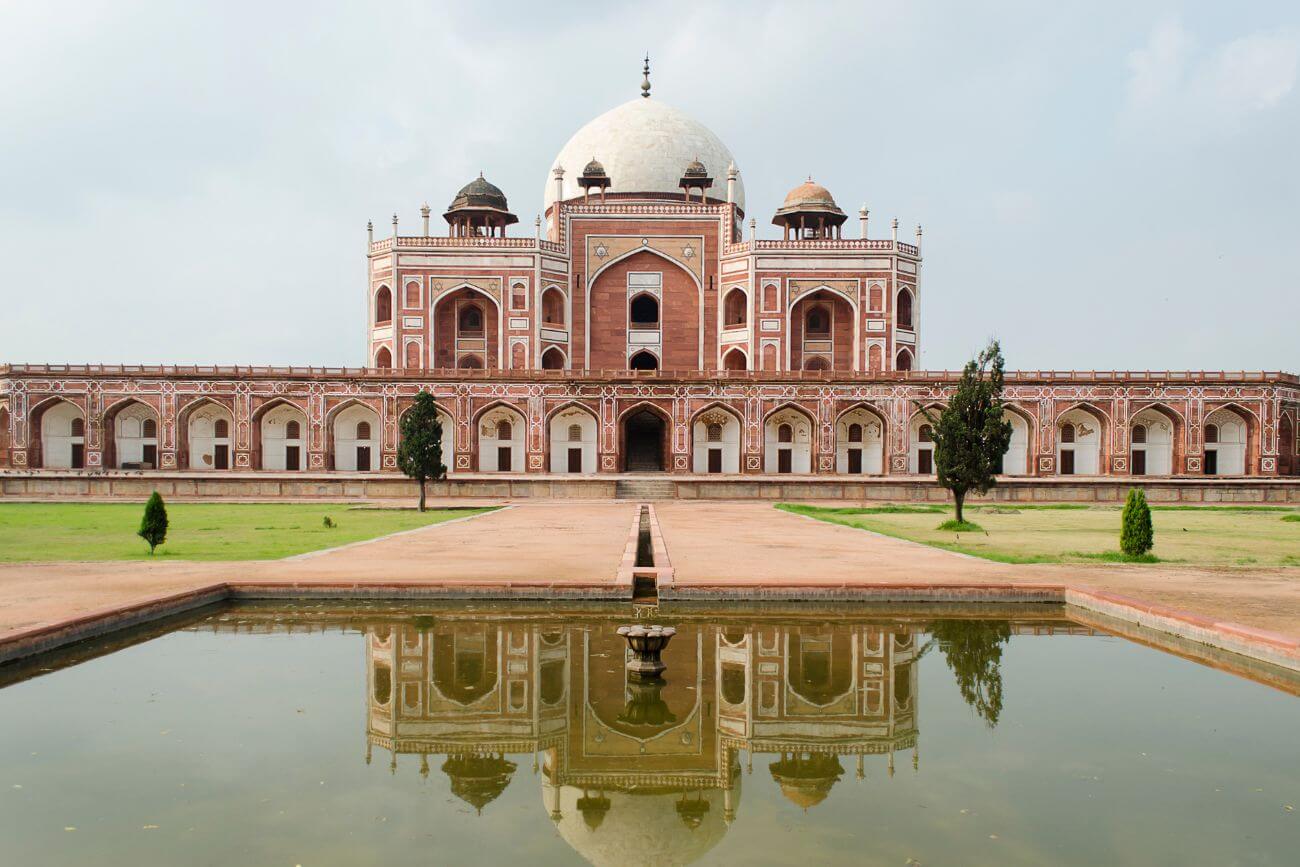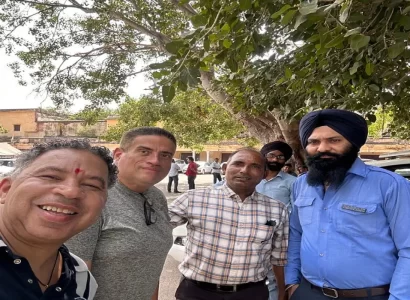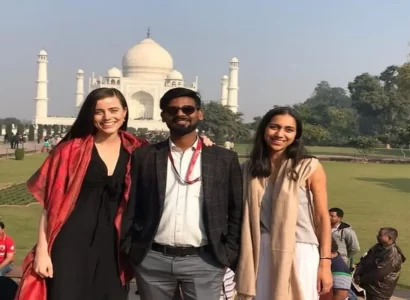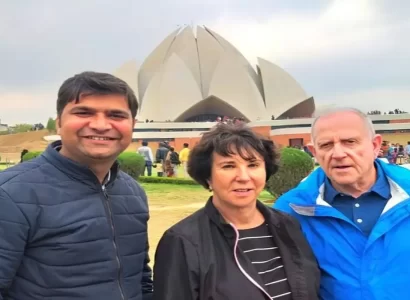Delhi, the vibrant capital city of India, is a seamless blend of socio-religious, psycho-technological, juro-ideological, and politico-historical centers. When it comes to history, the beauty of Delhi is unmatched. As part of our series on tracing the historical masterpieces of Delhi, we at Treasure Trip India are thrilled to help you reconnect with your past. Our first monument in this journey is none other than the magnificent Humayun’s Tomb.
History of Humayun’s Tomb
A Lasting Tribute
Built between 1565 and 1572, Humayun’s Tomb was commissioned by his first wife and chief consort, Bega Begum (also known as Haji Begum).
The construction of this grand mausoleum took 14 years to complete after Humayun died in 1556, showcasing her devotion and love for her husband.
This tomb holds historical significance as the first garden tomb on the Indian subcontinent and served as an inspiration for many architectural marvels, culminating in the iconic Taj Mahal.
Mughal Legacy
The construction of Humayun’s Tomb was funded entirely by Bega Begum and cost a staggering 1.5 million rupees at the time.
This grand structure became a resting place not just for Humayun but also for other Mughal emperors and their families, housing over 150 tombs within the complex.
The tomb’s sheer scale marked a departure from Humayun’s father, Babur’s, modest mausoleum in Kabul.
Construction Details
Bega Begum chose some of the finest Persian architects to bring her vision to life. She roped in Mirak Mirza Ghiyas from Herat, Afghanistan, who, along with his son Sayyed Muhammad ibn Mirak Ghiyathuddin, completed the exquisite designs.
The mausoleum’s construction began nine years after Humayun died in 1565 and was completed in 1572 AD.
Architecture of Humayun’s Tomb
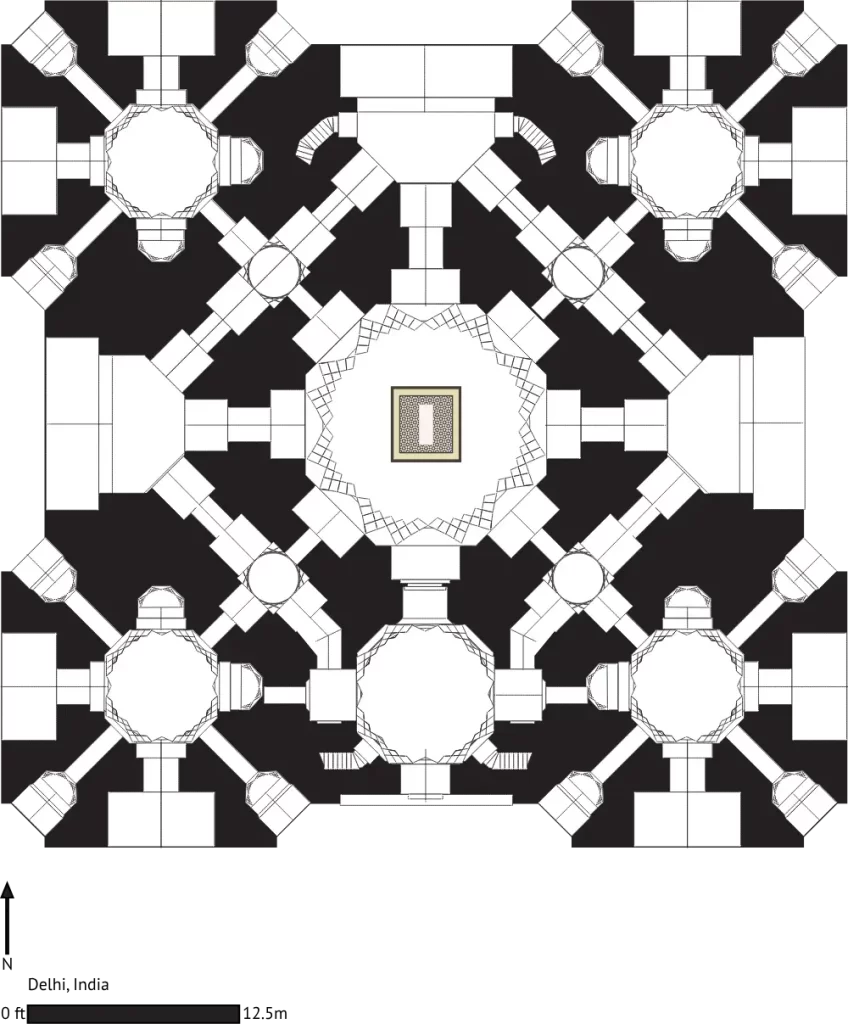
Char Bagh Delight
The centerpiece of the complex, Humayun’s Tomb itself, is built in the charbagh style, a four-quartered paradise garden. This design represents the four rivers of Paradise mentioned in the Quran.
Water channels and pools further enhance the garden’s beauty, providing a serene and picturesque environment.
Mughal Grandeur
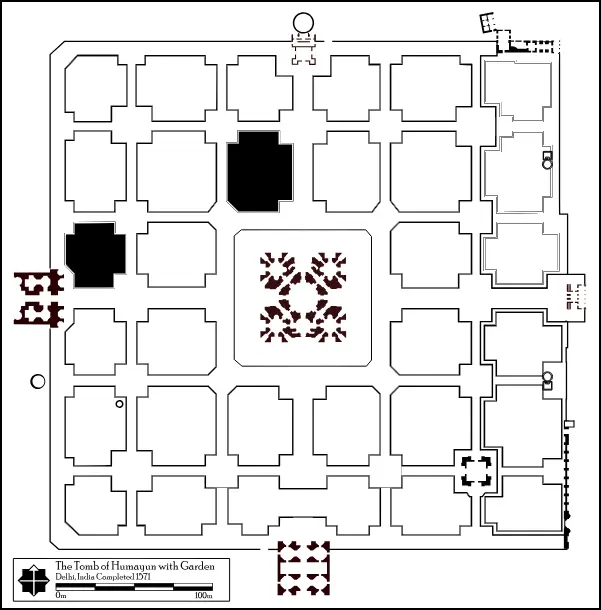
Humayun’s Tomb is a stunning example of Mughal architecture, blending influences from Timurid and Persian styles. The structure prominently features red sandstone and white marble, creating a visually striking contrast.
The tomb showcases a double-domed structure with kiosks at the corners, a design element that became a hallmark of Mughal architecture.
Intricate Details
The tomb is adorned with intricate geometric patterns, calligraphy, and floral motifs carved into the red sandstone. The use of white marble for the cenotaph (empty tomb) and latticework screens adds a touch of elegance, highlighting the intricate craftsmanship of the Mughal era.
Other Monuments in the Humayun’s Tomb Complex
Isa Khan Tombs and Mosques
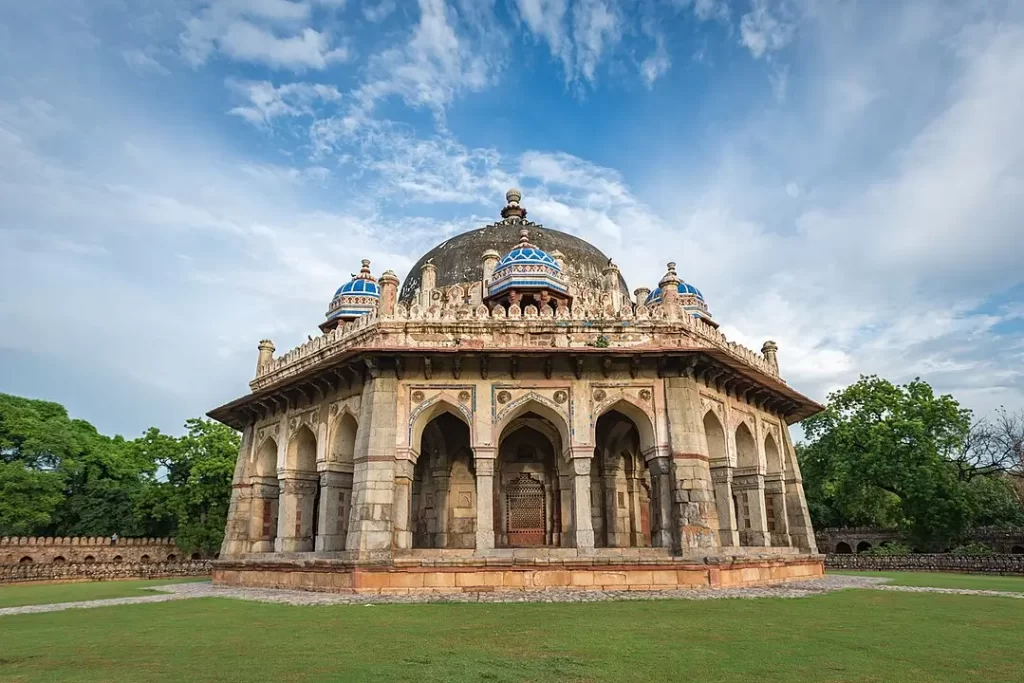
Entering from the west, you will encounter several monuments on either side of the road leading to the main tombs. The most notable is the complex of the tombs of Isa Khan, an Afghan noble in the court of Sher Shah Suri. This complex, built during the reign of Islam Shah Suri, houses the tombs of the entire Isa Khan family.
Nila Gumbad
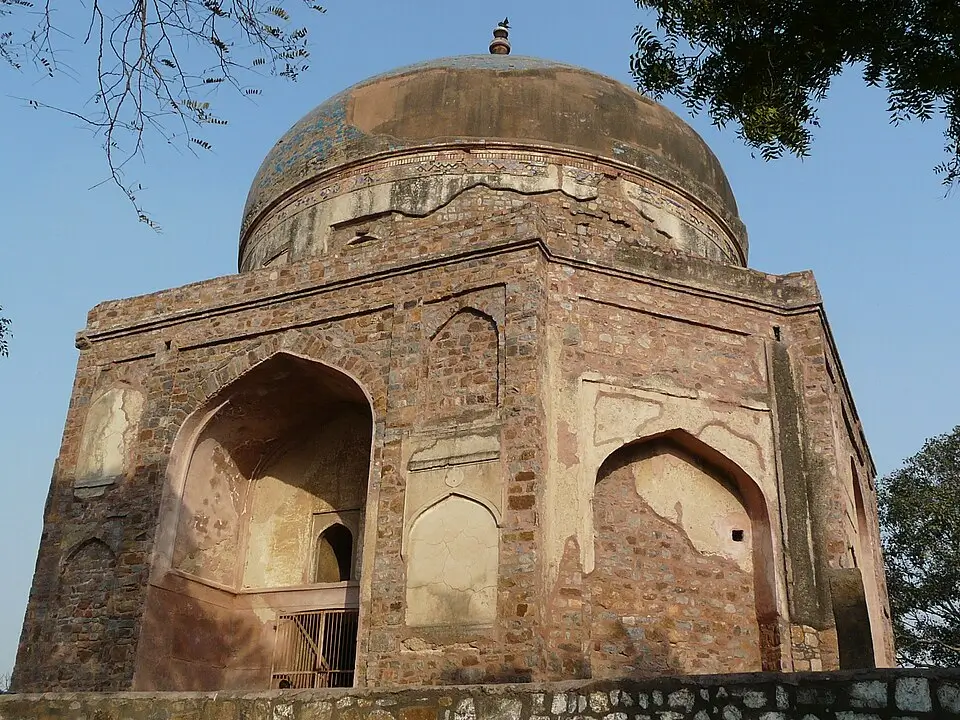
Just outside the complex boundaries is Nila Gumbad, named after its bright blue glass tiles. This tomb, built by the son of a courier for one of his favorite servants, Miyan Fahim, in the court of Emperor Akbar, is renowned for its unique architecture. It features an octagonal exterior and a square interior decorated with plastered walls.
Chillah Nizamuddin Auliya
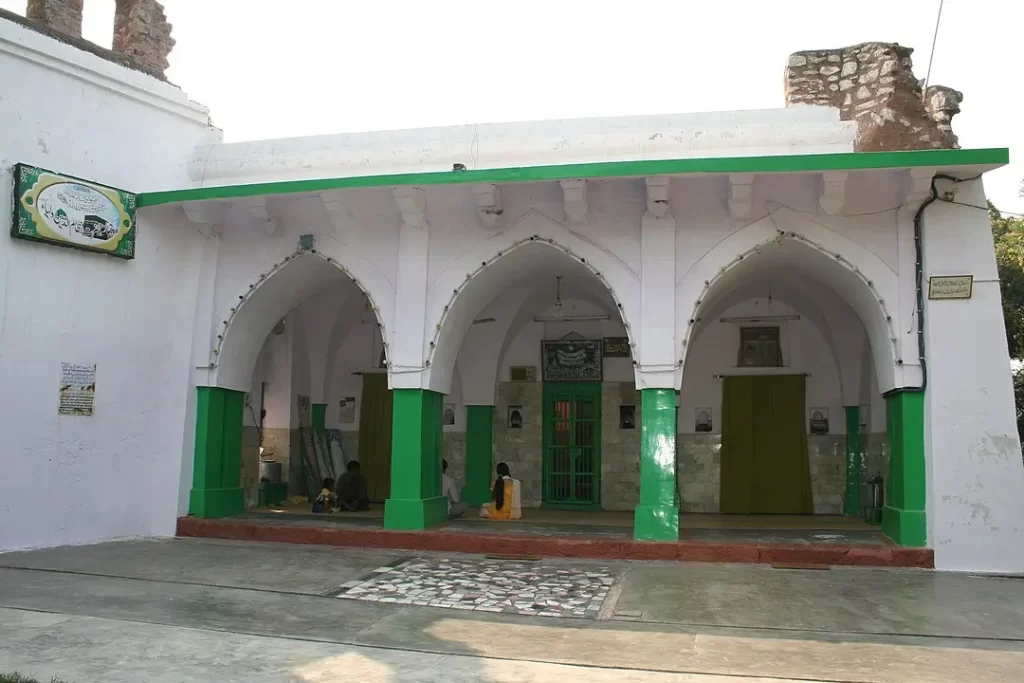
At the northeastern end of the main mausoleum lies Chillah Nizamuddin Auliya, a prime example of Tughlaq-era architecture. This building is believed to have been the residence of Nizamuddin Auliya, the patron saint of Delhi.
Barber’s Tomb
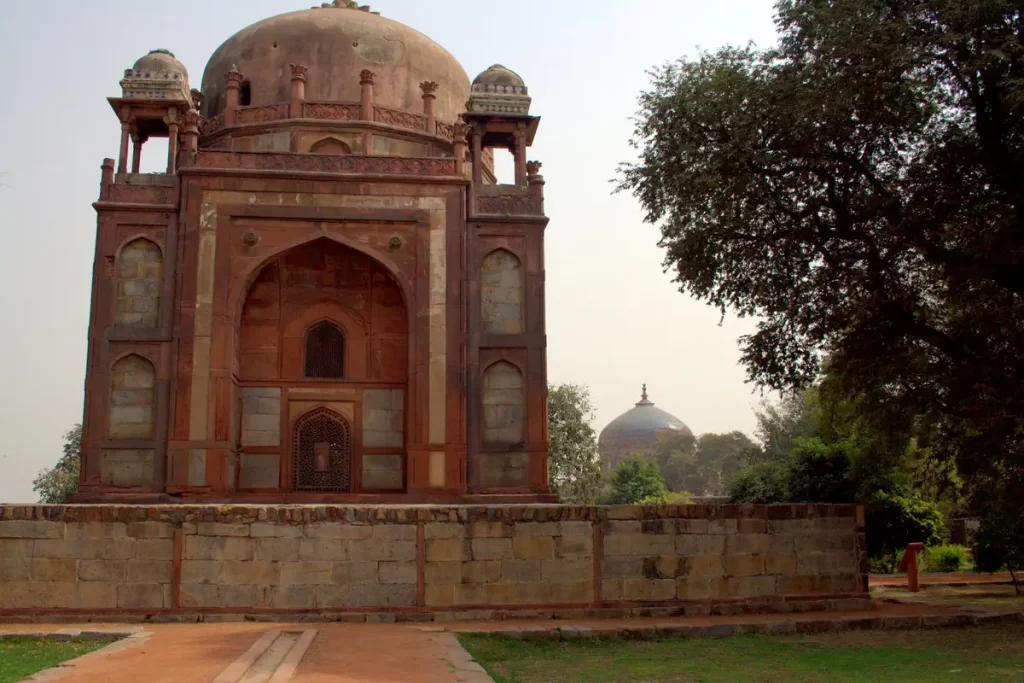
Surrounded by Charbagh, Nai ka Gumbad, or Barber’s Tomb, is located at the southeastern end of the complex. Built between 1590 and 1591 AD, the tomb belonged to a royal barber in the court of Humayun.
Visiting Humayun’s Tomb
Timings and Entry Fee
- Opening Hours: Daily from 6:00 AM to 6:00 PM
- Entry Fee:
- Indian Nationals: ₹30
- Foreign Visitors: ₹500
- Children under 15: Free
- Ticket Purchase: Tickets can be bought at the entrance of the tomb complex; there is no online ticketing available.
Best Time to Visit
- Optimal Period: Mid-October to Mid-March
- Reasons:
- Festive season with celebrations like Diwali and Christmas
- Numerous open food festivals around the city
- Ideal weather for exploring Delhi’s historical sites
- Recommended Food Spots:
- Jama Masjid
- Chandni Chowk
- Ghalib’s at Nizamuddin
How to Reach Humayun’s Tomb
- Nearest Metro Station: JLN Stadium on the Purple Line is the closest metro station, about 2 kilometers away. Jorbagh metro station on the Yellow Line is another option, located approximately 5 kilometers from the tomb.
- Nearest Bus Stand: Delhi Transport Corporation (DTC) buses, including routes 447, 19, 966B, and 166, have stops near the tomb.
- Nearest Railway Station: Nizamuddin Railway Station is about 2.2 kilometers away.
- Nearest Airport: Indira Gandhi International Airport, serving both domestic and international flights, is located about 25 kilometers from Humayun’s Tomb.
Humayun’s Tomb: A UNESCO World Heritage Site
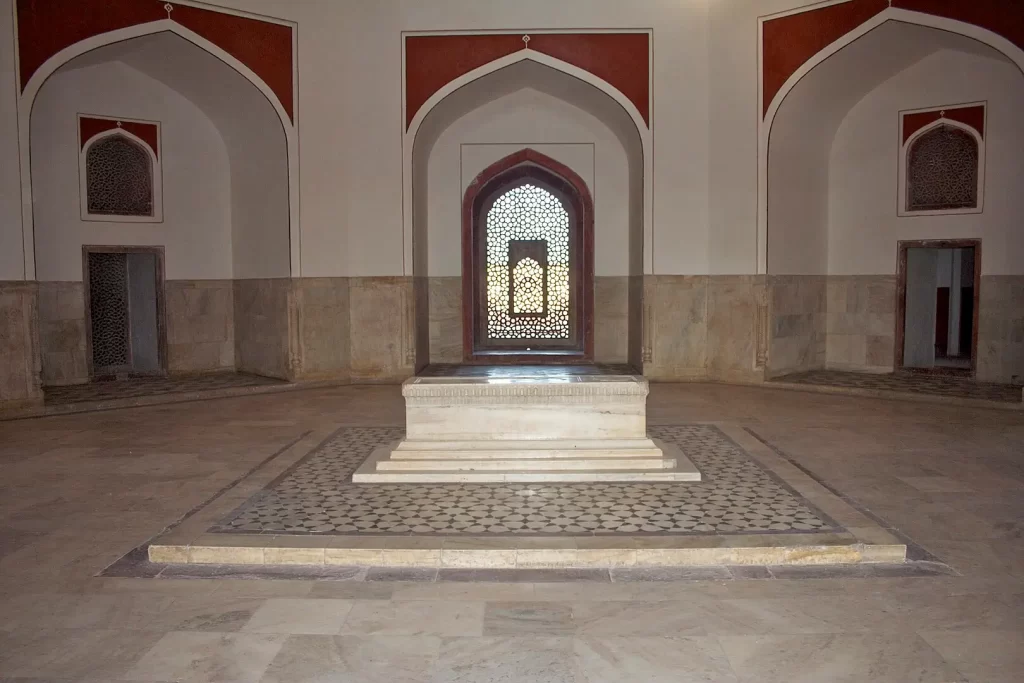
Humayun’s Tomb, recognized as a UNESCO World Heritage Site, stands as one of the finest examples of Mughal architecture in India.
Built in the 16th century by Humayun’s wife, Hamida Begum, the tomb is set in a large char bagh garden and is surrounded by other Mughal buildings, including a mosque and a tomb for Hamida Begum herself.
Final Thoughts
Humayun’s Tomb is an architectural marvel that beautifully blends Persian and Indian styles. Its historical significance and architectural beauty make it a must-see for anyone visiting Delhi.
As you walk through the serene gardens and explore the intricate details of the tomb, you will feel a deep connection to the rich history and cultural heritage of the Mughal era. At Treasure Trip India, we are dedicated to helping you rediscover, remember, and relish these timeless treasures.
So, pack your bags and embark on a journey through time with us, starting with the magnificent Humayun’s Tomb.
